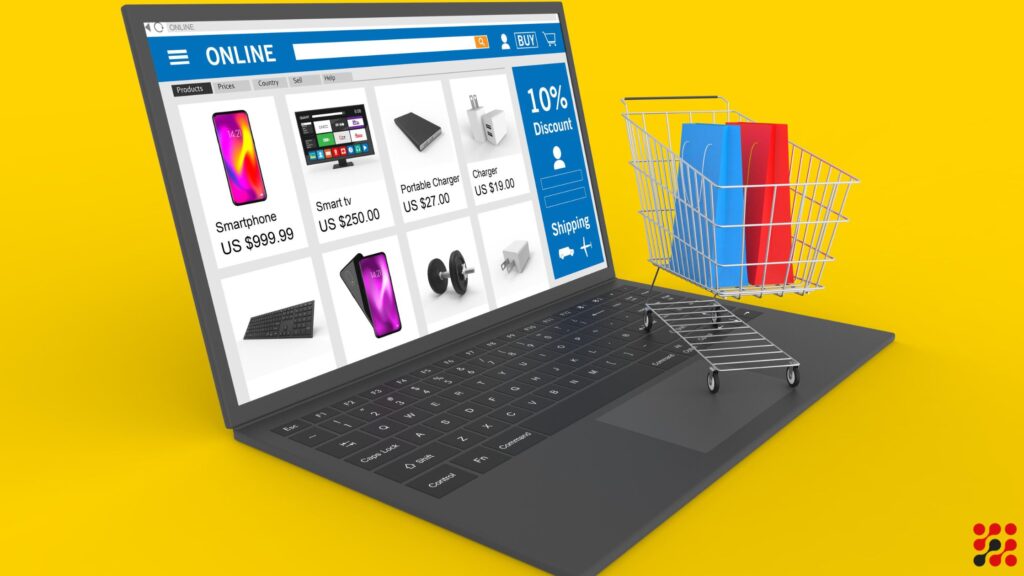Have you ever felt overwhelmed by all the confusing terms and abbreviations in healthcare?
Don’t worry! Today, we’re setting sail on a journey to uncover what is credentialing in medical billing.
So, buckle up and get ready to dive deep into this important aspect of RCM Medical Billing.
What is Credentialing in Medical Billing
Let’s start by answering a simple question: What exactly is medical billing credentialing?
Think of it as the key that unlocks access to getting paid in the healthcare industry. Credentialing meaning in medical billing is the process that healthcare providers go through to prove they’re qualified to work with insurance companies.
It’s like earning a stamp of approval that says, “Yes, I’m qualified to do this job!”
You can manage all this stuff in PMS, Read our detailed guide on what is a practice management system.
Why Credential in Medical Billing Matters?
Now that we know what it is, let’s talk about why credentialing process in medical billing is so important.
Imagine going to the doctor, receiving excellent care, and then finding out later that the doctor can’t get paid for their services.
That’s where provider credentialing in medical billing comes in.
Without it, healthcare providers wouldn’t be able to get reimbursed for the care they provide, which could have serious consequences for both providers and patients.
Understanding the Credentials Meaning in Medical Billing And Other Terms
Now, let’s break down some of the confusing terms you might come across when talking about what is credentialing in medical billing.
Medical Billing Credentialing
This is the specific process for proving that you’re qualified to work with insurance companies in the world of medical billing.
Credentialing Process
This refers to all the steps involved in getting credentialed, from filling out paperwork to waiting for approval.
Provider Credentialing
This focuses on healthcare providers like doctors and nurses, who need to be credentialed to get paid for their services.
Credentialing Process in Medical Billing Explained
So, how does the credentialing process in medical billing work?
It’s kind of like following a treasure map with lots of twists and turns.
Providers have to submit a bunch of paperwork and prove that they have the right qualifications.
Then, they have to wait for insurance companies to review their application and give them the green light.
It can be a long and complicated process, but it’s essential for making sure that providers get paid for their hard work.
Benefits of Provider Credentialing in Medical Billing
Credentialing meaning in medical billing promotes patient satisfaction and confidence by upholding standards of care and professionalism.
Provider Qualifications Transparency
Credentials meaning in medical billing is to ensure that healthcare providers have all the necessary qualifications and expertise to deliver quality care.
Maintaining Standards of Care
By requiring credentialing, medical billing upholds standards of care within the healthcare industry.
Facilitating Insurance Reimbursement
Credentialing enables healthcare providers to participate in insurance networks, allowing them to receive reimbursement for services rendered to patients.
Bonus Tip: Health insurance enrollment and health insurance software development will automate your insurance work flows.
Prevent Fraud and Abuse
Through rigorous credentialing processes, medical billing helps prevent fraud and abuse by verifying the legitimacy of providers and their practices.
Protecting Patient Privacy
Credentialing protocols include measures to protect patient privacy and confidentiality, ensuring that sensitive EMR information remains secure. Don’t forget to read our detailed guide on EMR Cost.
Provider Accountability
By holding healthcare providers accountable to established protocols and standards, provider credentialing in medical billing encourages transparency and integrity in patient care delivery. Ai Medical Diagnosis Apps are here to scale up the diagnosis process.
Promoting Continuity of Care
Credentialing supports continuity of care by ensuring that patients can access services from qualified providers within their insurance networks.
Build Trust in Healthcare
Patients can trust that credentialed providers have undergone thorough scrutiny, instilling confidence in the quality and reliability of healthcare services.
Meeting Regulatory Requirements
Credentialing aligns with regulatory standards and compliance mandates, ensuring that MVP in healthcare adhere to legal and ethical guidelines.
Reducing Administrative Burden
Credentialing improves administrative processes by standardizing provider enrollment procedures and documentation requirements.
Expanding Access to Care
Participation in insurance networks facilitated by credentialing expands patients’ access to a broader range of healthcare providers and services.
Network Integrity
Credentialing helps maintain the integrity of insurance networks by ensuring that participating providers meet established criteria for inclusion.
Supporting Professional Development
Through ongoing credentialing requirements, healthcare providers are encouraged to engage in continuous learning and professional development activities.
What are Different Stages Of Credentialing in Medical Billing?
Initial Credentialing
This process involves verifying the qualifications and background of new healthcare professionals before they commence their practice journey.
Re-credentialing
Re-credentialing entails periodic review and verification of a healthcare professional’s history and qualifications.
Provisional Credentialing
Offering a transitional pathway, provisional credentialing furnishes temporary credentials to healthcare professionals new to an organization, facilitating their integration into the healthcare ecosystem.
Information Collection
Healthcare organizations gather comprehensive data about a provider, educational background, licensure, work history, certifications, and professional references, laying the foundation for their practice journey.
Verification
Validation ensues as the organization corroborates this information through credible sources, such as medical schools, residency programs, and state licensing boards, ensuring the authenticity and validity of the provider’s credentials.
Evaluation
The hospital or health system evaluates the provider’s credentials and expertise, their organizational requirements, assessing clinical capabilities, patient outcomes, and adherence to clinical best practices.
Recommendation
Based on the thorough evaluation, a recommendation is formulated regarding the granting or withholding of staff privileges or enrollment, guided by the organization’s commitment to excellence in patient care.
Bonus Read: Examples of Disruptive Innovation in Healthcare
Communication
The decision, along with pertinent details, is communicated to all stakeholders, fostering a collaborative environment conducive to optimal patient outcomes.
Challenges in Medical Billing Credentialing Along With Solutions
Let’s explore some credential in medical billing pitfalls and how to steer clear of them.
1) Incomplete Documentation
Failing to provide comprehensive documentation can significantly delay the credentialing process. Missing or incomplete information about education, licensure, work history, and certifications can lead to setbacks.
Solution
Ensure that all required documents are collected and organized before initiating the credentialing process in medical billing. Double-checking for completeness can help avoid unnecessary delays.
2) Verification Delays
Verifying provider credentials from external sources, such as medical schools or licensing boards, can prolong the credentialing timeline.
Solution
Prioritize the verification process by promptly contacting relevant institutions and licensing boards. Establishing efficient communication channels and following up diligently can expedite verification.
3) Inadequate Evaluation Criteria
Using generic or insufficient evaluation criteria may result in overlooking essential qualifications or skills required for specific healthcare roles.
Solution
Develop robust evaluation criteria tailored to the organization’s needs and the nature of the healthcare provider’s role. Consider factors such as clinical expertise, patient outcomes, and adherence to quality standards.
3) Miscommunication with Providers
Poor communication with providers regarding credentialing requirements, expectations, and timelines can lead to frustration and misunderstandings.
Solution
Establish clear lines of communication with providers from the outset, providing detailed guidance on credentialing processes, documentation requirements, and expected timelines.
Regular updates and transparent communication can foster trust and cooperation.
4) Failure to Address Red Flags
Ignoring or downplaying discrepancies or red flags uncovered during the credentialing process can pose risks to patient safety and organizational integrity.
Solution
Address red flags promptly and transparently, conducting thorough investigations into any discrepancies or concerns.
Collaborate with relevant stakeholders, such as credentialing committees or legal advisors, to determine the appropriate course of action.
5) Lack of Regular Re-Credentialing
Neglecting to conduct periodic re-credentialing reviews can result in outdated or inaccurate provider credentials, potentially compromising patient care quality.
Solution
Implement a structured re-credentialing process that periodically reviews and verifies provider credentials, ensuring ongoing compliance with industry standards and organizational requirements.
Set clear timelines and reminders to facilitate timely re-credentialing.
6) Inconsistent Documentation Management
Poor organization and management of credentialing documentation can lead to misplaced or inaccessible records, hindering the credentialing process.
Solution
Implement information management systems or software that centralize and streamline credentialing documentation.
Establish standardized protocols for document storage, retrieval, and retention to ensure accessibility and compliance.
Credentialing Meaning in Medical Billing FAQs
What documents are typically required for medical billing credentialing?
The required documents may vary but commonly include copies of professional licenses, malpractice insurance certificates, DEA registration, and educational credentials.
How long does the medical billing credentialing process usually take?
The duration can vary depending on factors such as the complexity of the provider’s practice. However, it often takes several weeks to several months to complete.
What role do insurance companies play in the credentialing process?
Insurance companies play a pivotal role in credentialing by reviewing and verifying the qualifications of healthcare providers to ensure they meet the standards for participation in their networks.
Can medical billing credentialing be outsourced to third-party organizations?
Yes, many healthcare practices opt to outsource their credentialing processes to specialized third-party organizations to streamline the process and ensure compliance with industry standards.
What happens if a provider’s credentialing application is denied?
If a provider’s credentialing application is denied, they may have the opportunity to appeal the decision or address any deficiencies in their qualifications.
In some cases, it may be necessary to reapply after addressing the issues identified during the initial review.
And there you have it! Until next time, happy credentialing!







